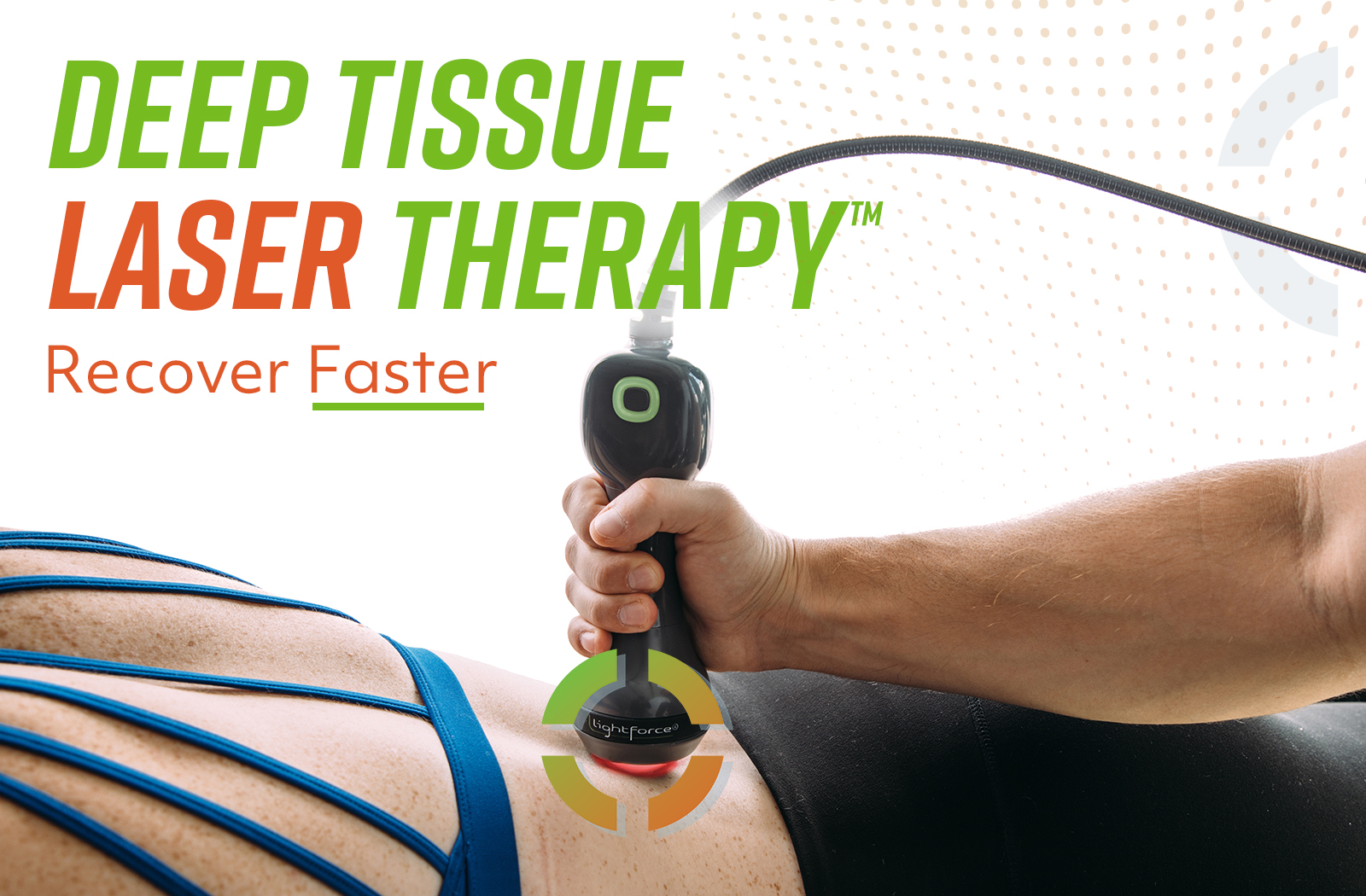Deep Tissue Laser Therapy
The Science Behind Deep Tissue Laser Therapy
Laser therapy is a medical treatment that uses focused light to stimulate a process called photobiomodulation (PBM). During PBM, photons enter the tissue and trigger a biological cascade of events that leads to an increase in cellular metabolism, which can decrease pain and inflammation and accelerate the healing process.
Treatments
Experience Pain Relief and Reduced Inflammation associated with:
- Neck Pain
- Back Pain
- Shoulder Pain
- Sciatica
- Arthritis
- TMJ
- Plantar Fasciitis
- Sports Injuries
- Soft Tissue Damage
- Neuropathy
- Headaches
- And Much More…

5 Reasons You’ll Love Deep Tissue Laser Therapy
- It Works
The number 1 reason you will love laser therapy? It works! When you are suffering from a painful injury or
condition, deep tissue laser therapy can provide powerful pain relief, promote tissue repair, and reduce
swelling– even when other therapies have failed. - It’s Fast
Deep tissue laser therapy treatments are very fast – typically lasting between 4-7 minutes, depending on the size of the area treated. The results are often fast too, with many patients reporting pain relief and improved range of motion after the very first treatment. - It Lasts
The therapeutic benefits of deep tissue laser therapy extend far beyond the treatment itself. After each treatment, patients can expect notable pain relief, with the effects lasting longer after each treatment. - It’s Safe
Deep tissue laser therapy can be used on most patients with minimal contraindications. With over 1 million treatments performed worldwide each month, it offers a safe alternative to opioid pain killers and surgical intervention in many cases. - It’s Proven
There is a significant body of evidence supporting the use of deep tissue laser therapy as both an adjunct and a standalone treatment for a variety of musculoskeletal conditions. From head to toe, researchers have concluded that laser therapy is effective for reducing pain, increasing range of motion, and improving overall quality of life for patients suffering from many common and difficult-to-treat conditions.


